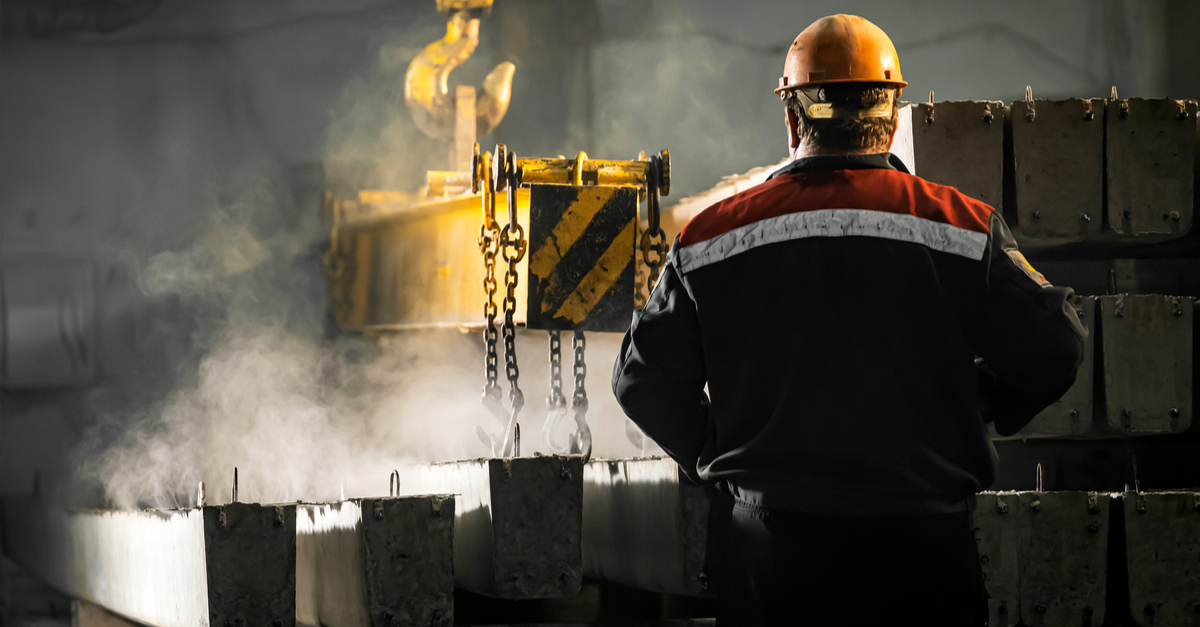
Opinions Industry protectionism 786 08 May 2022
Increasing supplies from Ukraine will reduce prices and compensate for metal that Europe lacks
The European Union is one step away from fully opening its market to Ukrainian exporters, including metallurgists. The decision has already been made by the United Kingdom, and clear signals about the possible removal of barriers to the import of metal from Ukraine are also coming from the United States. I will explain why the removal of trade restrictions will not only help Ukraine’s economic recovery, but also benefit our allies.
Prospects for Ukraine
Ukraine had been losing more than $3 billion annually due to protectionist measures against the products of its iron & steel industry. Ukraine could supply to world markets about 3.5 million tons of metal products, but did not do that due to barriers and anti-dumping duties. To understand the scale, this is the approximate volume of production of a large steel plant with a staff of 10 thousand employees.
While the war between two civilizations is underway in Ukraine, accompanied by the destruction of housing, infrastructure and industry by Russian shells, Europe plans to take an unprecedented step to support our economy and open their door fully to Ukrainian exports. At the end of April, the European Commission has approved the removal of duties on Ukrainian products. However, this initiative has yet to be approved by the European Parliament and the European Council. Convincing European parliamentarians and leaders of the need for this step is one of the top priorities for our economic diplomats. Let me remind that Ukraine’s iron & steel industry in the pre-war period provided 35% of the county’s exports and provided $15 billion earnings in 2021. One third of Ukrainian metal exports accounted for EU countries.
The lifting of the restrictive measures is expected to help return Ukraine’s hot-rolled products to the European market. Prior to the introduction of a duty of €60.5/t in 2017, we exported more than 700,000 tons of hot-rolled products to Europe. But such a serious barrier has abolished the supply of these products from Ukraine. Also, we lost almost $100 million due to the European duty (8.1%) on Ukrainian steel seamless pipes. These are not the only, but the most significant obstacles to Ukrainian metal products in terms of revenue.
Our other ally, the United States, where there are 220 restrictive measures on imports of steel industry products (not only from Ukraine), shows no less strict economic protectionism. One of the most painful for steelmakers is the so-called Trump duty of 25%, approved in 2018 by the administration of the 45th President of the United States “for reasons of national security.” However, in the last few years, more than ten major exporters, including the European Union, have managed to agree with the United States to replace tariffs with quotas. As a result, the US market receives duty-free about 60% of all imported steel, but, unfortunately, not yet from Ukraine. The American business media have already reported that Washington is seriously considering abolishing this duty for Ukraine. Convince the White House of the need to lift restrictions on Ukrainian metal is another important front of work for our state negotiators.
How we can export
Business in Ukraine is reviving in the third month of Russian aggression, albeit at a slow pace, as far as combat situation allows. If in March, when the rashists were on the outskirts of Kiev, 35% of enterprises that provide 55% of Ukraine’s GDP completely stopped working, by the end of April, according to Ukraine’s central bank, the share of idle enterprises fell to 17% (about 20% of GDP) ). Thanks to the Armed Forces of Ukraine!
On the other hand, metal production in Ukraine, for fair reasons, cannot yet reach the pre-war level. In the partially occupied Mariupol, Russian barbarians ruined two metallurgical giants: Ilyich Iron and Steel Works and the Azovstal plant, whose heroic defense will certainly be included in history textbooks. Factories in the free territories are cautiously resuming and increasing production, but it is too early to talk about the volumes that these plants produced before February 24.
There are also serious problems with logistics. While Russian warships block Ukrainian seaports, which account for 60% of all Ukrainian exports, we have one way of supply – by rail to the EU and then directly to European consumers, or through the Baltic ports and Romanian Black Sea transport capacities to other countries.
Yes, the railway is congested today. Evacuation trains from occupied and destroyed towns and villages, military echelons, including those delivering the “gifts” necessary for the front from the Western Allies, will, of course, be a priority until the end of the war. In addition, the enemy, suffering heavy losses on the battlefield, is increasingly cruise missiles attacks on Ukraine’s railroads and hubs. Only on the night of May 4, 18 missiles were launched targeting six regions in Ukraine and delayed the departure of 43 passenger trains for a long time. And while the occupier continues to “precisely” hit non-military targets, it is difficult to predict the possible volume of exports by rails. But we have already proved to ourselves and to the world that we are coping with seemingly impossible tasks at the front. Therefore, I am sure we will solve a strategically important problem with the delivery of metal cargos to Europe.
How it will strengthen Europe’s security
Prior to the war, not yet completely isolated Russian economy supplied Europe with about 3.5 million tons of metal products, ranking second only to Turkey. The fourth package of EU sanctions, approved in March, dealt a significant blow to metal exports from the aggressor country, although it did not completely stop it. For example, semi-finished products of some Russian companies have not been restricted and continue to come to the plants in EU countries. But at the same time we should thank some European companies that have completely refused to take Russian metal. Hopefully, the European Union will increase sanctions on Russian metallurgy, its second largest source of export revenue after oil and gas.
As expected, the sharp decline in supplies has led to shortages and rising metal prices in Europe and the world. It is also important to keep in mind that the United States, UK and the EU are generous in providing us with their armored vehicles, artillery and plans to increase supplies. But the reserves of “armor” must be constantly replenished as Russian threat looming over the entire Western world.
Demand for the metal will grow, and in the summer we expect the traditional seasonal need. Increasing supplies from Ukraine will make it possible to compensate a share of metal that Europe lacks, reduce prices and, as a result, reduce the cost of production of armored vehicles and artillery to strengthen the security of Ukraine and NATO countries.
Reducing dependence on Russian energy resources is also an important aspect of the national security of European states. Europe has already announced its unwavering intention to phase out hydrocarbons from Russia, thus weakening the aggressor’s economy. This means that in other oil and gas countries more of them to be extracted. This will require more pipes, including Ukrainian ones, the quality of which is confirmed by the successful experience of global oil and gas companies.
One year is not enough
The current version of trade restrictions lifting, approved by the European Commission, is only for one year. Ukrainian negotiators must convince our allies – that is too little time for Ukraine’s bombed-out economy support. It will take years, if not decades, to rebuild housing, infrastructure and industry after such large-scale destruction by the Russian military. I hope that the European Union also understands this and does not exclude the possibility of extending the term of duty-free trade.
European officials have already said they will grant Ukraine candidate status. The full and long-term, or rather perpetual, opening of the market will best demonstrate the EU’s firm determination to accept Ukraine into the family of free European nations after our joint victory over the Russian aggressor.





